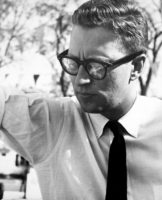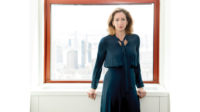In writing about the towers of Manhattan in a February 1913 article in this magazine, critic Montgomery Schuyler extolled the virtues of building with terra-cotta, focusing particularly on the plastic nature of the inexpensive material to create the elaborate decoration on the Woolworth Building, completed that same year.
Over a century later, terra-cotta is making a comeback on New York towers. SHoP has used it extensively to clad its 1,428-foot-tall building at 111 West 57th Street. For One Vanderbilt, another supertall currently under construction in Midtown, KPF has employed the product for the building’s prominent spandrels.
Those two firms, along with SOM, Payette, KieranTimberlake (KT), HKS, and Pelli Clarke Pelli with STUDIOS participated in the Architectural Ceramic Assemblies Workshop (ACAW) in Buffalo, NY this summer. ACAW, now in its fourth year, is a joint venture of the research center on Sustainable Manufacturing and Advanced Robotic Technologies (SMART) at the University at Buffalo (UB) and Boston Valley Terra Cotta, which provided the terra-cotta for the recent restoration of the Woolworth Building (and One Vanderbilt).
“This workshop is an opportunity to combine professional and industry engagement in a transdisciplinary way to address the larger question of research,” says Omar Khan, a professor at UB’s School of Architecture and Planning and coleader of SMART.
Most teams used the opportunity to produce intricate cladding panels, though SHoP developed interlocking units for structural terra-cotta to create an arch, and KT’s team, led by partner Billie Faircloth, collaborated with composer Joshua Stamper to produce music using fluted terra-cotta pipes. The growing involvement in ACAW by such firms testifies to the renewed interest in contemporary applications of this age-old material.












Post a comment to this article
Report Abusive Comment